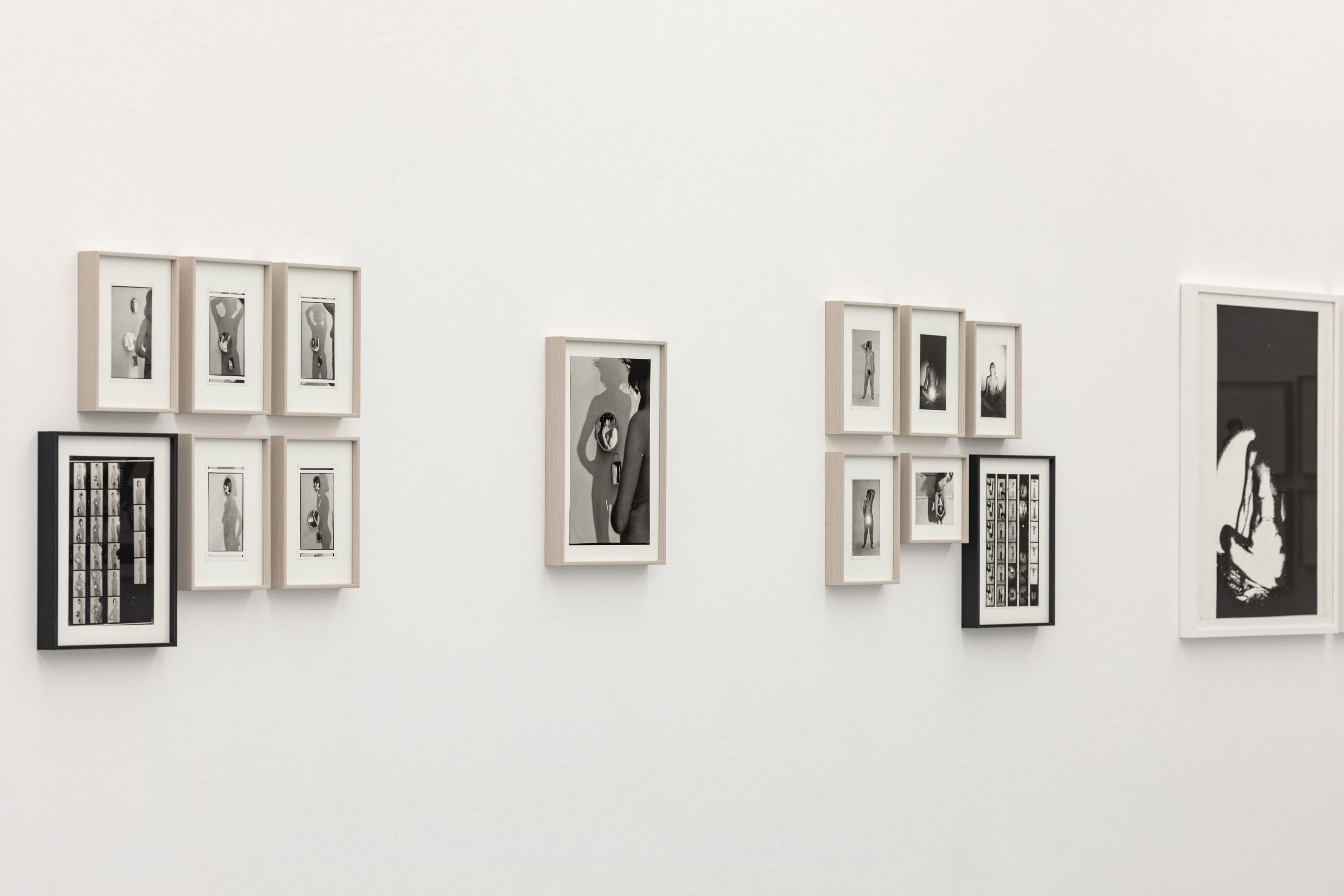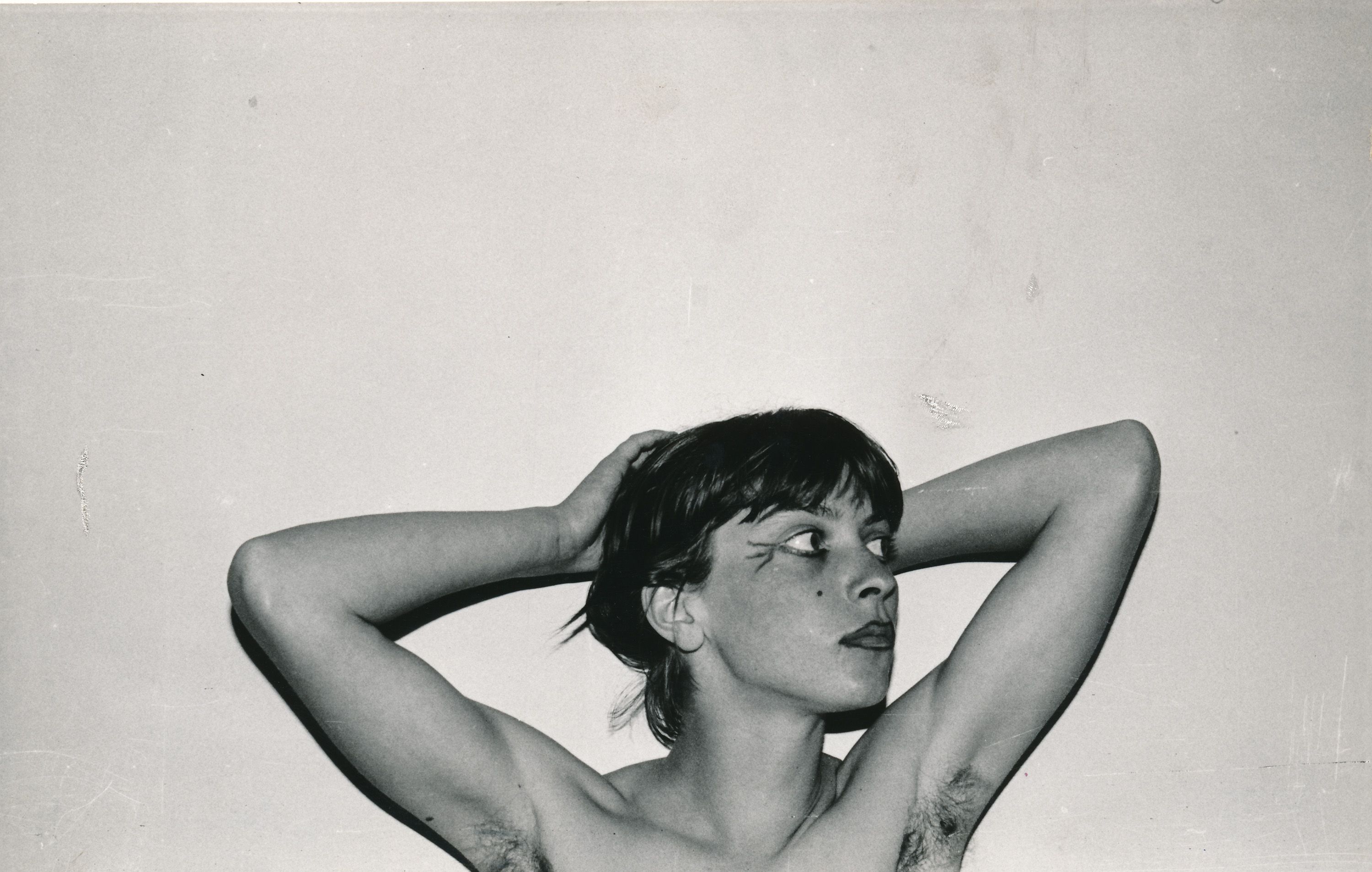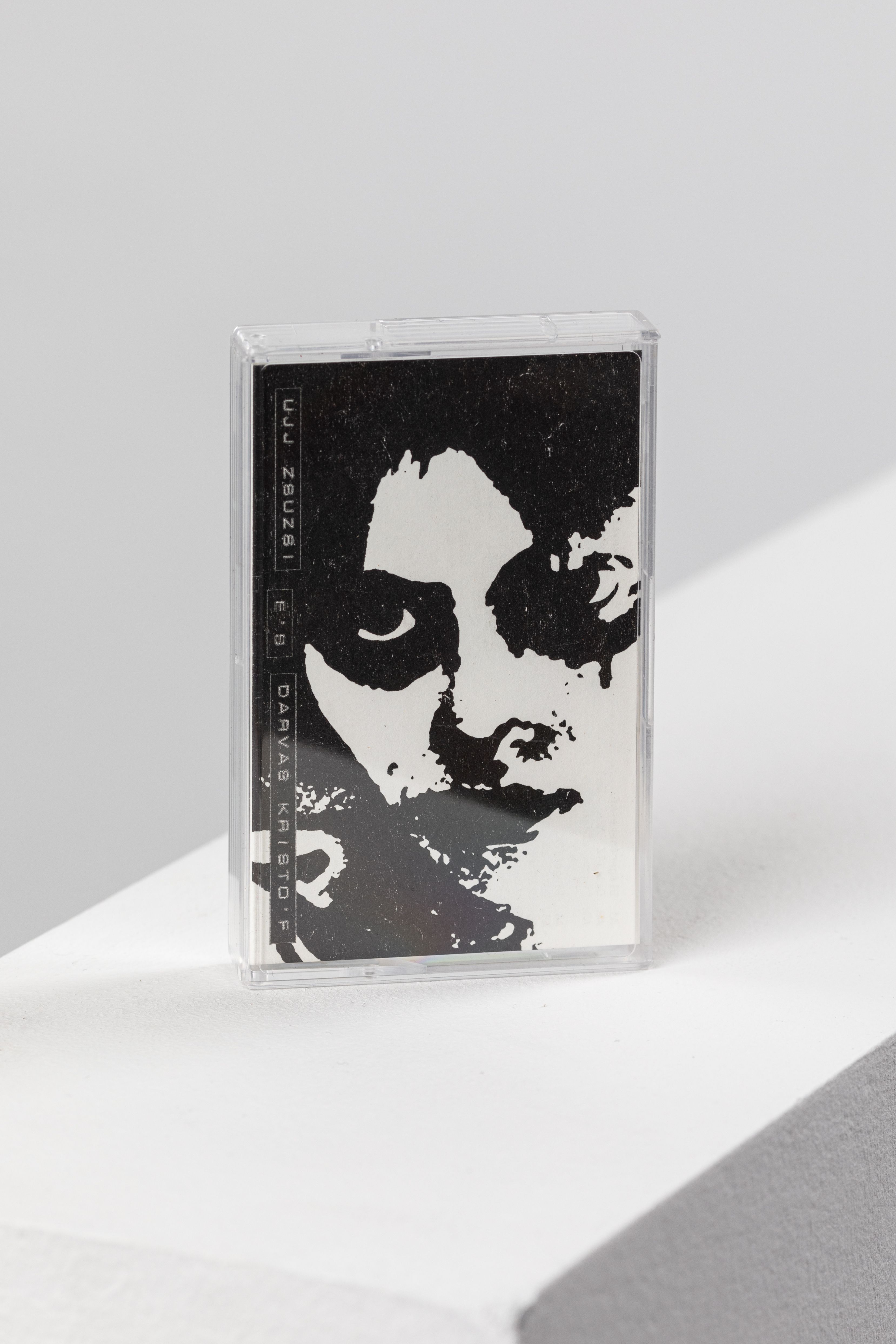Zsuzsi Ujj
Chansons in Black and White
| Venue: | acb Gallery |
| Date: | May 05 – Jun 16, 2023 |
| Opening: | May 04, 2023, 18:00–21:00 |
Description
Zsuzsi Ujj’s first solo exhibition at acb Gallery presents a diverse and wide-ranging selection of her photographic works, with the endeavour of exploring and presenting the connections and relationships between the series that make up her oeuvre. Typically of the ‘new wave’ that largely dominated the eighties, poetry, lyrics, music and visual art are in close unity with each other in Zsuzsi Ujj’s works. The title of the exhibition and the cinematic materials placed among the photographs underline these connections, juxtaposing the poetic, vocal and artistic aspects of Zsuzsi Ujj’s work. These art forms are bound together by the artist’s powerful skill of creating images, her visual expressiveness and the ability to effectively convey melancholic moods, often infused with ironic, grotesque humour.
Her personal motivation and the intimate-private atmosphere prevailing in her texts have defined Zsuzsi Ujj’s photographic works, the creation of which is inseparable from her experience of an unfolding love triangle. Known as the ‘start’ of this creative work, the date of 1985 can, owing to more recent information, be more and more confidently pushed to 1986, making the photographic period of Zsuzsi Ujj’s career one year shorter. It was in this year that photographer István Halas left for Paris, and Zsuzsi Ujjj began sending her first photographs to him, her love at the time. This shifted dating only adds to the intensity of the artist’s creative activity within a period of merely 5-6 years until the completion of her final series, In Circle I-IV in 1991 – also included in the exhibition. During this period, never having received any formal training, the artist created a unique oeuvre of Hungarian visual art using photography, dealing with models of female roles and experiences as a woman, in which she drew on various topoi, modes and forms of vulnerability, seduction and self-discovery, her compositions and gestures saturating various behavioural patterns with new contents. In the descriptive text accompanying the American exhibition organized by American curator John P. Jacob, which included works by István Halas, Zsuzsi Ujj and Tibor Várnagy (1989), he was the first to use the phrase “gender representation” in reference to her carefully planned and staged black and white photographs of her own body as a medium, often ‘equipped’ with body paint and props emphasizing either the female corporeal experience or an androgynous character – but also in reference to the work of any Hungarian artist. Among her models we find the experience of Tibor Hajas’ performance art, János Vető’s photo performances, but also – as we can read in Kata Oltai’s study of Zsuzsi Ujj and her interview with the artist – some of Lenke Szilágyi’s photographs of fragmented female bodies, which she had encountered in contemporaneus exhibitions.
Zsuzsi Ujj’s debut exhibition in the spaces of acb presents a broader selection of well-known Zsuzsi Ujj works as well as never-before-exhibited pieces, from her very first photographs from the series With a Broom and In the Corner featuring dotted body painting, to prints from the In Circle series that concluded her oeuvre. Attention to motivic repetition and objects (especially the various uses of mirrors or foil), and the narrative power of alternating close-up and distant views are equally at play in this selection and arrangement. The exhibition of exclusively vintage prints – with one exception (With an Egg, 1986/2023) – includes representative works that have become the artist’s trademark, ‘hard graded’ almost to the point of having a graphic effect (the series of five that was once exhibited in the United States, including the well-known Bridal, but also the rarely exhibited Giving Birth), but the selection also includes pieces of the Lap, Flying and Wrapped series (1986) with both hard and soft tonal variations, as well as With a Throne, which has become the most famous work by Zsuzsi Ujj, and its ‘couplet’, the aforementioned With an Egg, the dressed-up self-portrait variations using transitions and multiplications, a piece from the Sun Lamp series, which is undeniably related to the works of Tibor Hajas, and the pieces of the With Öcsi series that boasts a strong narrative force, in addition to the studies of Torso I-III.
Being a member of the circle around Liget Gallery in Budapest, which was home to experimental genres and the ‘alternative’ uses of photography by visual artists, the choice of photography as a medium was self-explanatory for the young artist who had already been writing for years and devoted to film. It was the curatorial work of Tibor Várnagy and the Liget Gallery he managed that provided Zsuzsi Ujj with her first exhibition opportunities and, thanks to the gallery’s network, opportunities to exhibit internationally as well. Nevertheless, Zsuzsi Ujj’s photographs, or more precisely their multiple layers and diversity, the quantity of her series, perhaps due to the short period of time in which she used the language of visual art, were for a long time known only to a narrow circle of professionals. A landmark event in the (re)discovery of her oeuvre in Hungary and abroad was the artist’s participation in the show Gender Check (2009) and her being invited to the exhibition Bigger Splash: Painting After Performance Art (Tate Modern, London, 2012), in which MissionArt Gallery’s activities proved to be fundamental. As of 2021, Zsuzsi Ujj’s oeuvre has been in the care of acb Gallery, and it was in this capacity that the gallery contributed to the organisation of the exhibition Zsuzsi Ujj: Self Timer at the Castle Gallery in Veszprém in 2021, and in the same year to the exhibition Zsuzsi Ujj: First Notebook at Liget Gallery, and to the presentations of Zsuzsi Ujj’s work in New York and Los Angeles in collaboration with James Danziger Gallery.
In addition to her love of literature and music, Zsuzsi Ujjj’s approach also reserves a prominent role for cinematic thinking – she used to work at the Béla Balázs Studio, at Péter Forgács’ Private Hungary Archive and at the Black Box Foundation. Traces of this interest can be detected in her storytelling and her use of framing reminiscent of film stills. After literally swapping the camera for a microphone in the early nineties, she became a key figure in the Hungarian alternative music scene as a founding member, singer and lyricist of the Csókolom band. In the last decade he has also been performing as a duo with pianist Kristóf Darvas.
The motion pictures featured in the exhibition are: the footage of a concert recorded on the closing day of Zsuzsi Ujj’s first exhibition at the Liget Gallery in November 1987; a selection of her photographic works in harmony with the music of Csókolom and supplemented with a creative statement, which is almost an experimental film (Zsuzsi Bar / Without Chocolate Coating, 1997). We also present a video made especially for the exhibition (creators: Kata Balázs, concept, interviews, editing; Zsuzsanna Simon, camera, editing; Dániel Sipos, translation), which, in addition to a substantial selection of photographic documents, also features interviews – in addition to the artist – with the people who played a key role in Zsuzsi Ujj’s photographic activities – namely, sociologist Sándor Mátyási, Zsuzsi Ujj’s former husband, photographer István Halas, Zsuzsi Ujj’s former lover and assistant, artist Tibor Várnagy, manager of Liget Gallery between 1983 and 2022.
The exhibition is part of the Budapest Photo Festival’s program.
Wall painting by János Borsos


